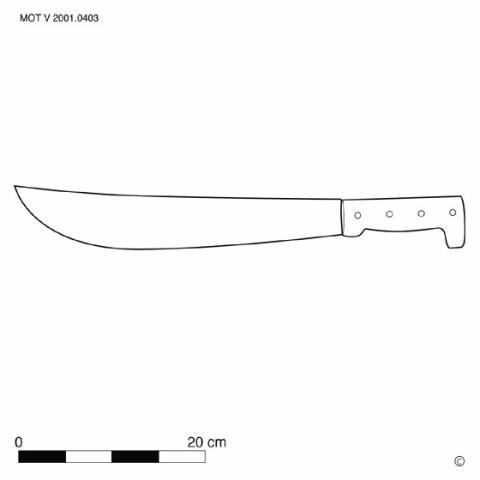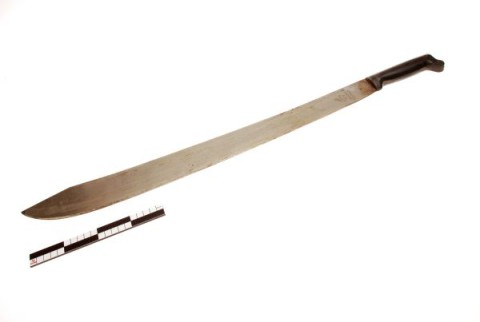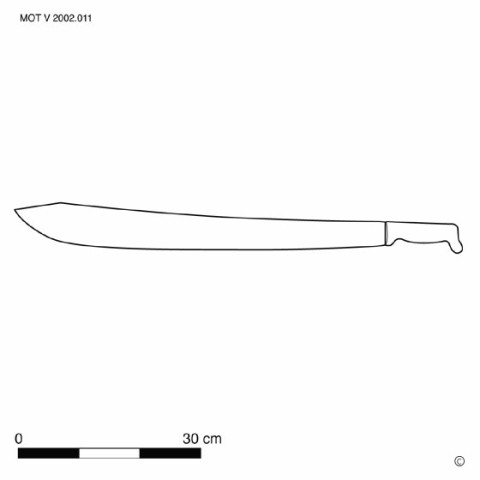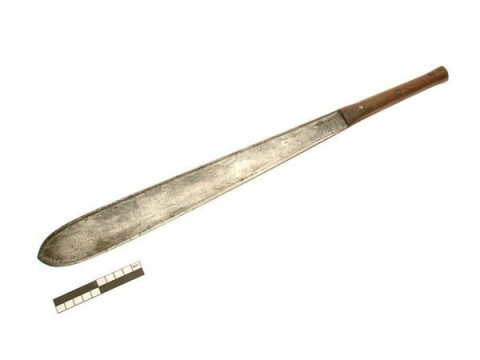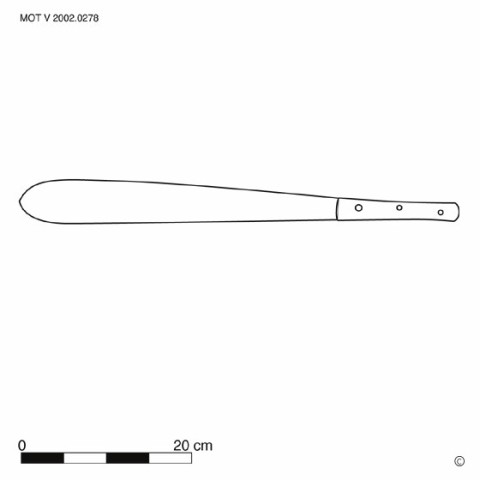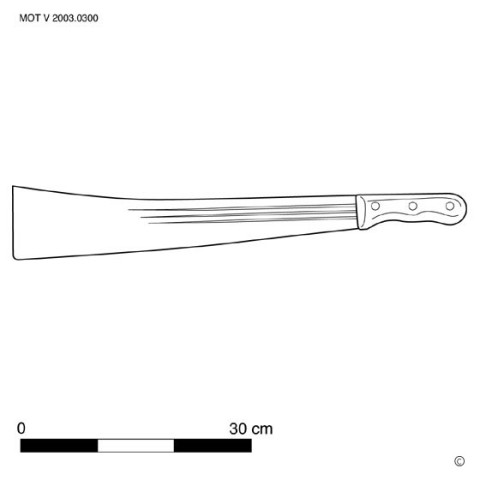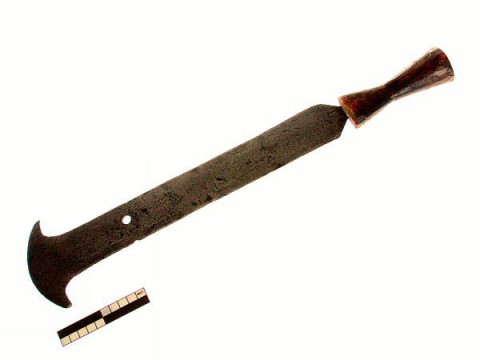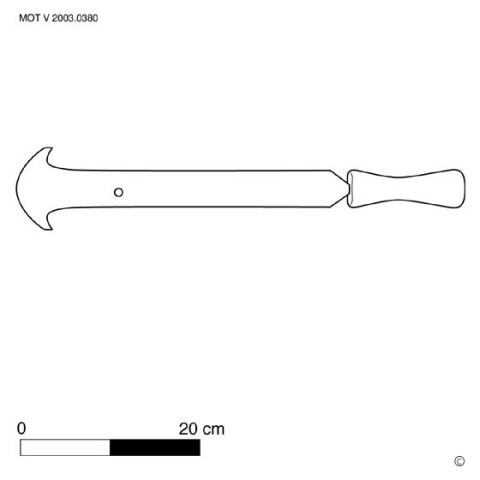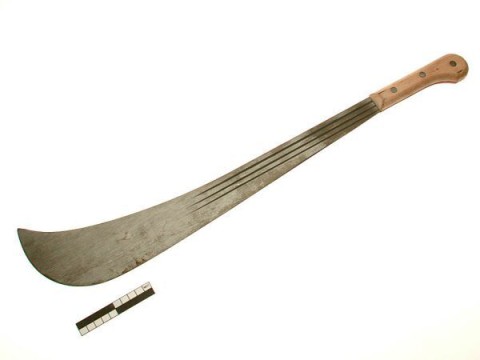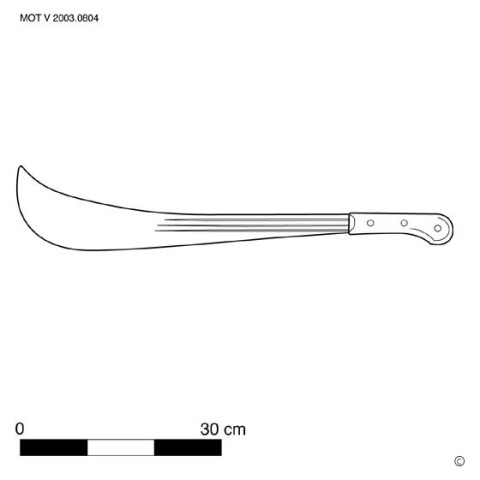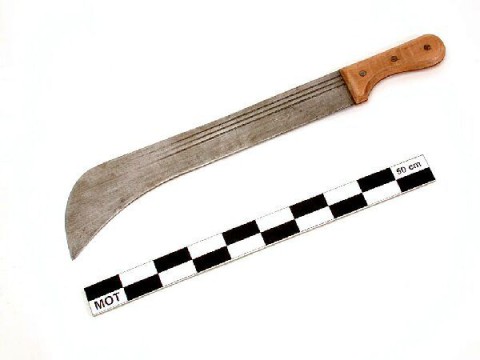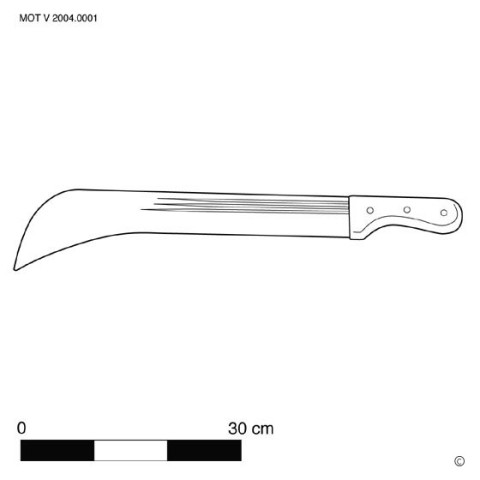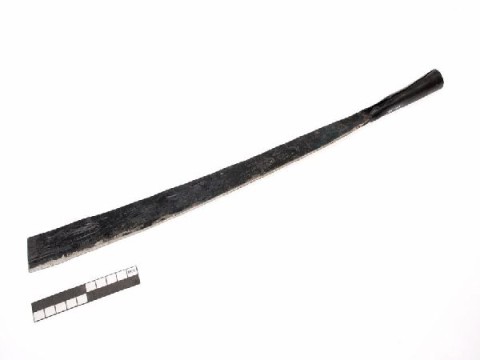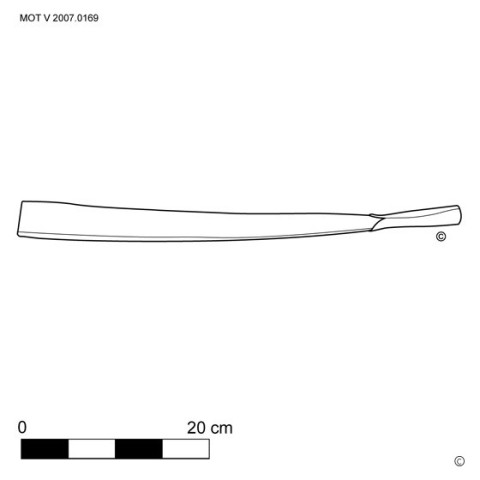Machete
"Machete" is a general term for a hand tool that is used daily in Latin and South America, Central Africa and Southeast Asia, including as a billhook. The tool is indispensable on the cocoa, coffee and sugarcane plantations, on the corn fields, in the hemp or sisal cultivation (1), but it is also an all-round tool par excellence. After all, with the machete you can also mow grass (2), chop cassava stems and peel cassava tubers, harvest bamboo, fell thin trees, cut your way in the jungle or in thorny vegetation, cut down coconuts, skin killed animals, cut meat and fish, dig tubers out of the ground, peel trees as with the strip drawing knife (3), etc.; it is also used as a weapon (4).
The machete has a long (25 to 75 cm) metal blade (5). The back is straight or slightly concave, the cut is straight or rounded towards the tip (6). The blade can be 3 to 10 cm wide and cuts on one, exceptionally on both sides. The handle is made of wood, leather, rubber or plastic. Sometimes there is a hole in the end of the handle for a wrist strap to pass through (7).
In Southeast Asia, the edge is protected by a wooden or leather sheath, which is worn around the loin with a strap. In Latin and South America and in Central Africa, the machete is generally not sheathed.
In the past, a machete was also used to prune hedges in Western Europe. It has now been replaced by the hedge shears. [MOT]
(1) FAUCHERE: 68; HOPPING: 124.
(2) Even the lawn was cut with it (MAHIAS: 179).
(3) MOWAT: 22; FAUCHERE: 68.
(4) For example with the Dayaks of Borneo. In Indonesian the machete is called "parang" and "mandau".
(5) The Jivaro Indians of Ecuador used a very hard type of wood (Chontapalm) instead of metal for the blade (MOWAT: 12).
(6) See in HENRY all models manufactured between 1845 and 1965 by The Collins Company.
(7) STEPHENS: 115 mentions a folding machete that was used during W.W. II belonged to the equipment of the American paratroopers.
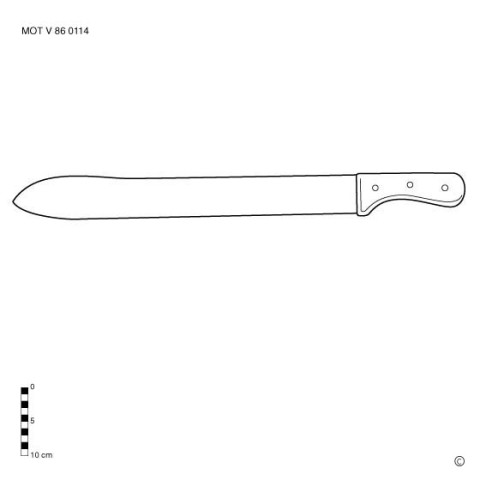
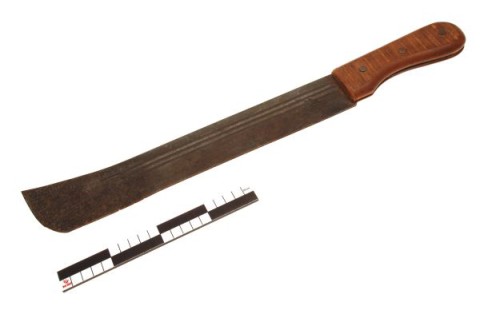
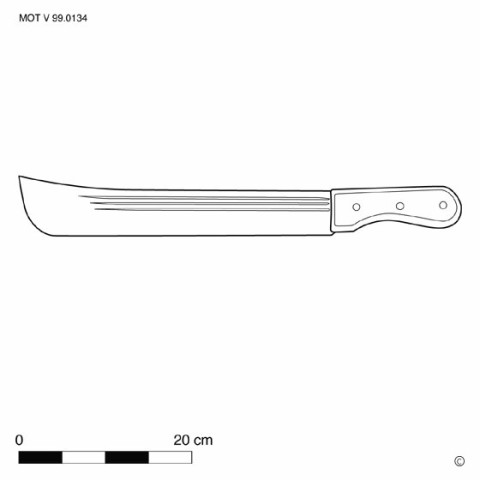
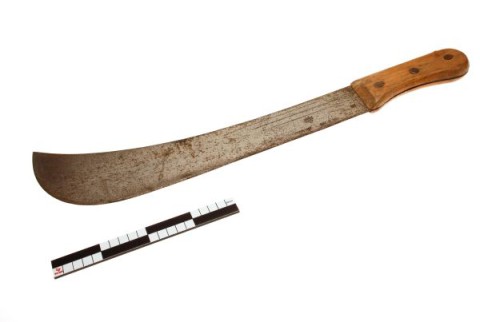
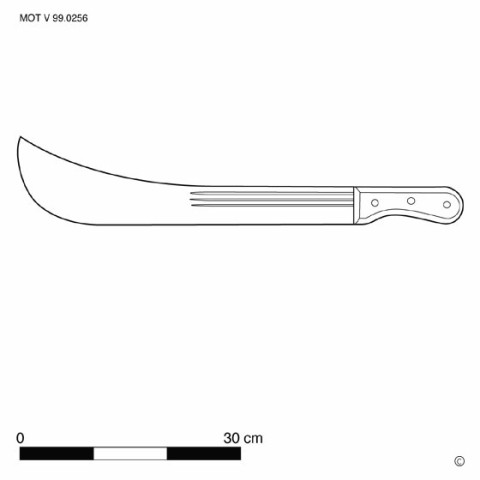
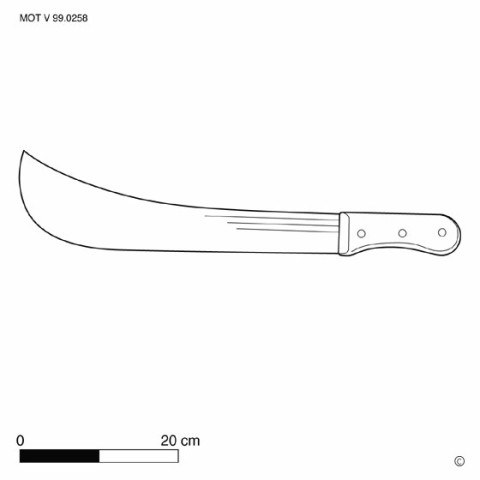
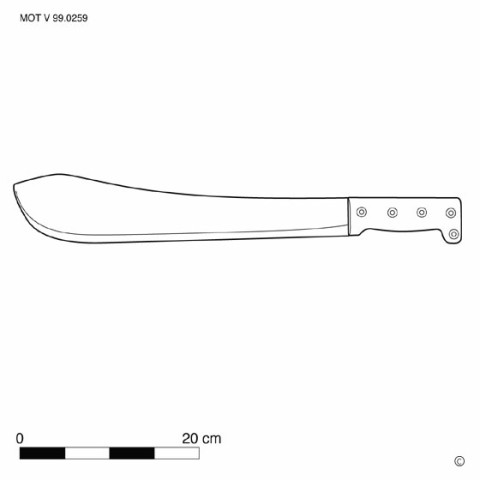
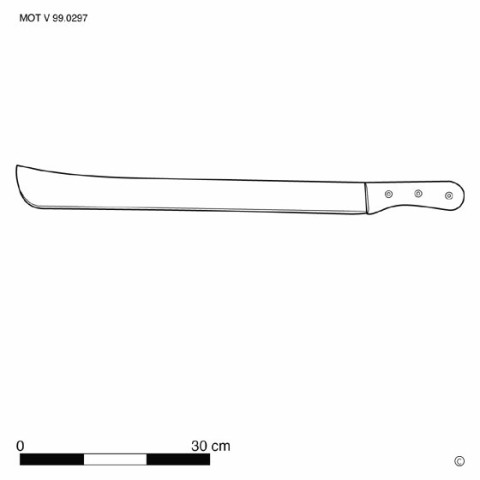
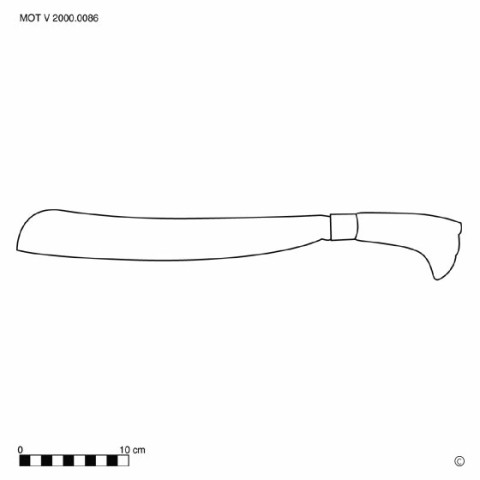
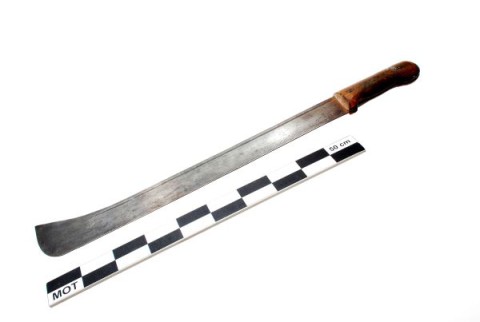
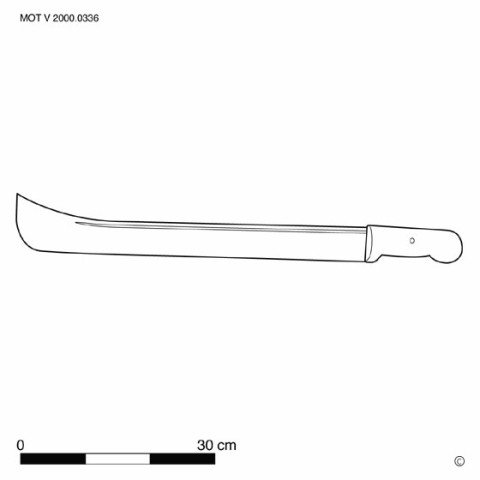
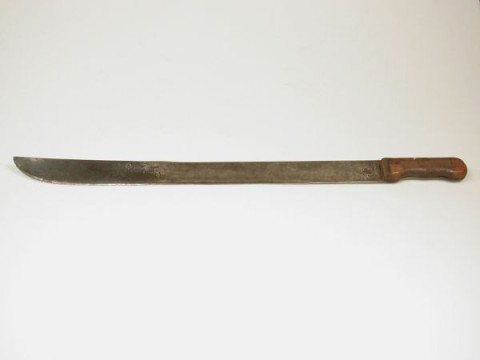
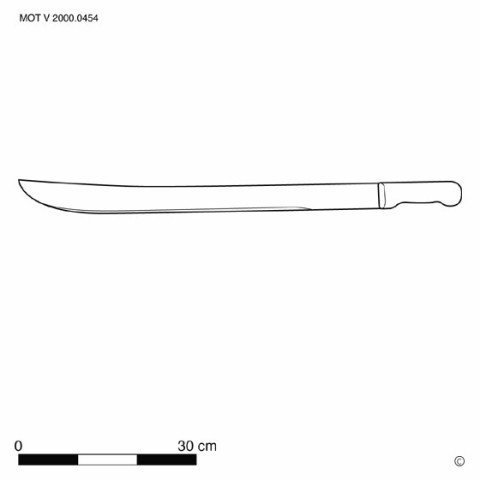
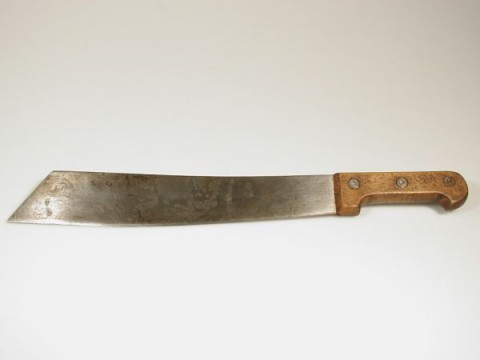
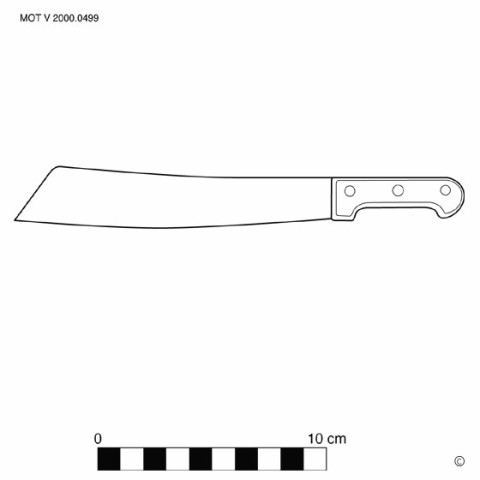
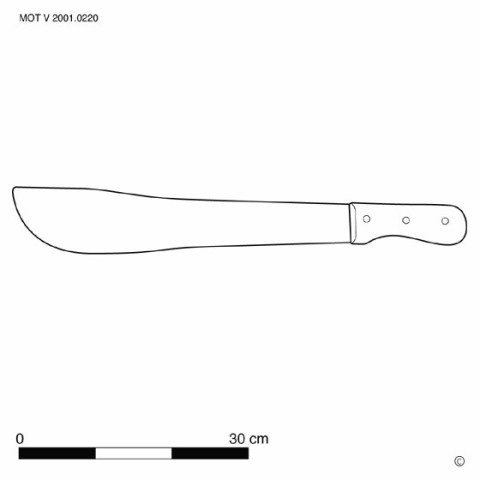
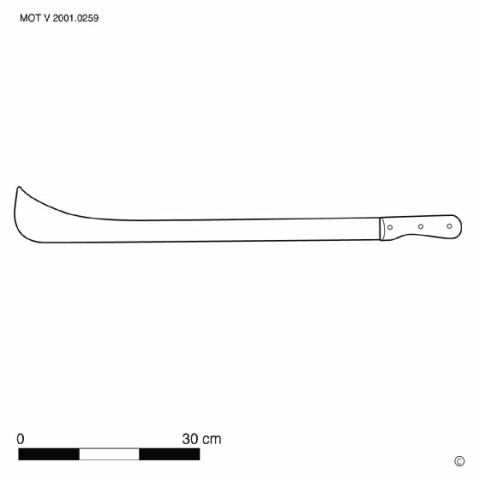
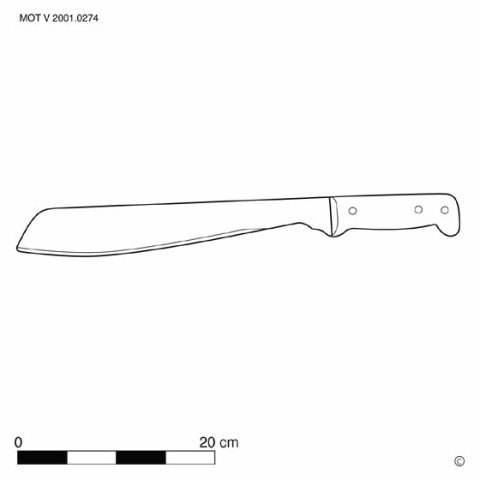
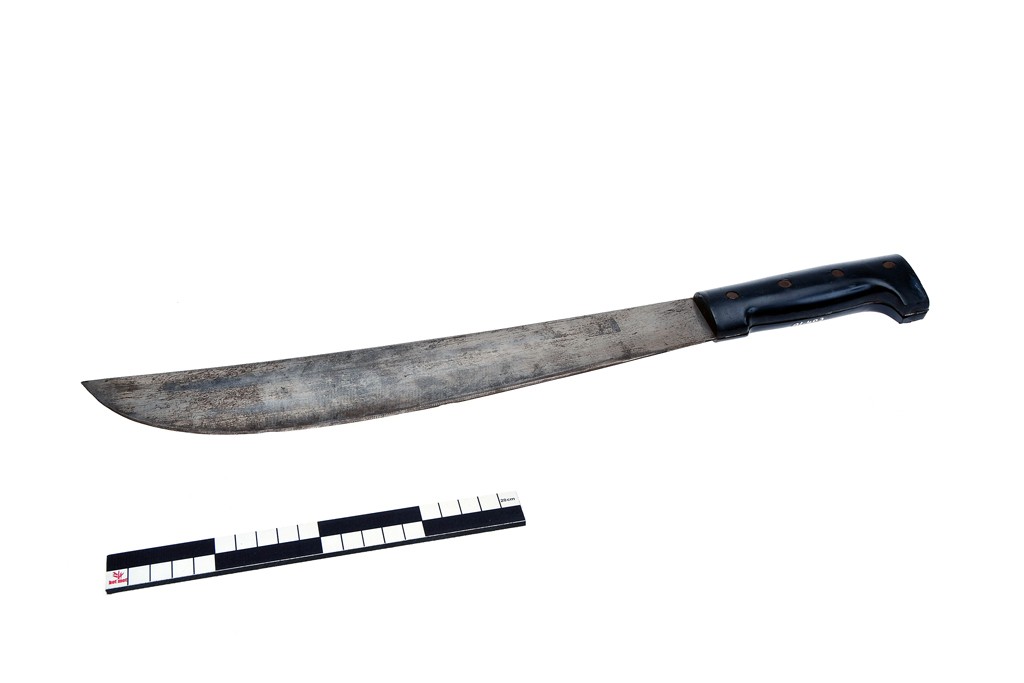
MOT V 2001.0403
